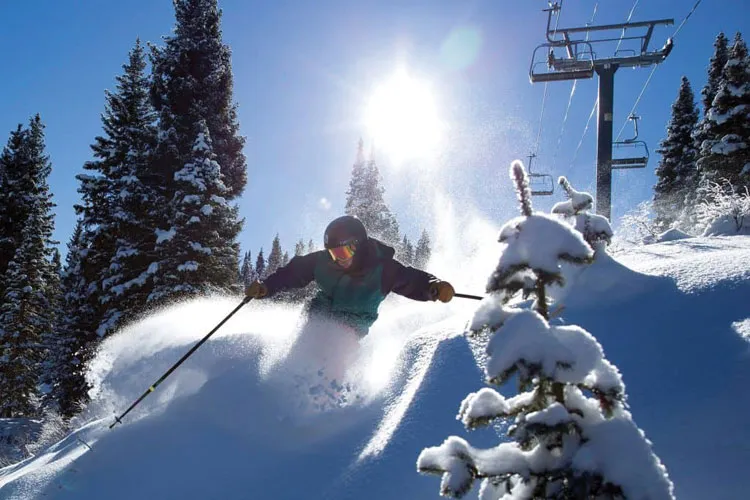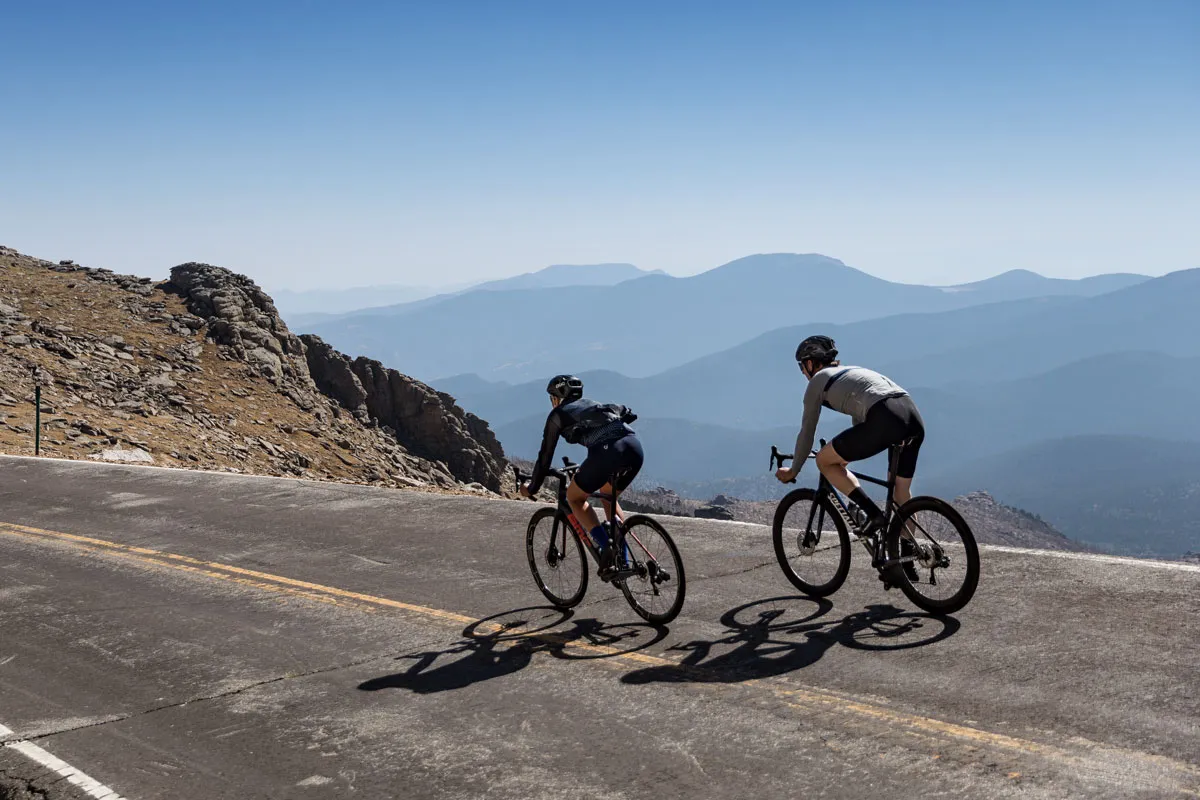‘Gut punch’ — Outdoor industry feels blow from COVID

What do you do if you’ve been cramped up inside for months on end without an office, or movie theater or gym or concert hall to visit?
For many Coloradans, the answer is: You go outside.
The COVID-19 pandemic has spurred interest in outdoor recreation, bringing new participants into the fold and sending gear and apparel flying off store shelves.
SPONSORED CONTENT
But unlike some Boulder Valley and Northern Colorado business sectors — liquor sellers or pharmaceutical companies, for example — the outdoor industry as a whole has struggled to capitalize on the pandemic.
“Overall the outdoor industry has taken a dramatic gut punch,” said Joel Hartter, the University of Colorado professor and director of CU’s master’s of the environment graduate program. The pandemic has “really rocked us. It rocked the way we do business.”
One of the more glaring examples of the virus’ toll on the industry is Broomfield-based Vail Resorts Inc. (NYSE: MTN).
Because it’s a publicly traded company, Vail’s financials are available to anyone. And those filings paint a grim picture.
As of mid-January, season-to-date total skier visits were down 16.6% compared to the 2020 ski season, which began to see a COVID-19 revenue hit in March 2020 when Vail began shuttering its resorts.
“There are many, many fewer people coming to these resorts,” in part due to capacity restrictions, Hartter said.
Lift ticket revenue season to date was off by 20.9% in January, ski school sales were down 52.6% and dining revenue fell 66.2%.
Vail posted a quarterly net loss of $153.8 million in December.
In response to capacity limits, many resort operators have implemented lift ticket reservation systems. While these systems have proven effective at capping crowds at lift lines, they can discourage visitors who may, in past years, have decided to travel into the mountains on whim.
“It’s time to pivot, time to be innovative and really try to respond to this set of moving targets,” Hartter said. “… I applaud these resorts for trying to solve this and puzzle through it. This is no easy task.”
It’s not just an issue of lower revenue for resort operators — they’ve also faced increased overhead due to the implementation of new health and safety protocols.
“They have a really tough job on their hands, but out of this comes some amazing opportunities” to innovate and develop better efficiencies and safety standards that could serve the industry even after the pandemic recedes, Hartter said.
Because of capacity limits, resorts have stepped up offerings for off-hours visitors, “which has become more popular,” Hartter said. But that increasing popularity isn’t enough to make up for lost revenue.
The virus isn’t the only factor that’s hampered resorts during the 2020-2021 winter season; it’s also the relatively dry weather.
As of Feb. 23, the statewide snowpack was only 90% of the annual norm — and that’s after several major February snowstorms. A month prior, the snowpack was only at 73% of the typical total, according to data from Natural Resources Conservation Service, marking a nearly four-decade low for late January.
In Vail’s early season metrics report from January, CEO Rob Katz said visitor totals were “impacted by snowfall levels that were well below average at our Colorado, Utah and Tahoe resorts through the holiday season.”
Thankfully, ski area operators such as Vail need not rely on Mother Nature for all of their snow.
“Regarding our opening day and early season, our state-of-the-art snowmaking enhancement, completed in 2019, enabled us to open with 200 acres of terrain from all three base areas back in November,” Vail senior communications manager John Plack said in an email. “That’s more than double our 2019 opening day where we opened with 95 acres. These snowmaking investments will ensure we consistently meet early season demand for skiing and riding.”
Late February saw several significant snow dumps, leading industry experts to hold out hope for a powdery late season.
“We turn the calendar on March next week, and March is usually the snowiest month in Colorado,” Neptune Mountaineering general manager Eric Barry said. “So we’re still hoping to capitalize on that business and have a strong finish to the season.”
Plack echoed this optimism, saying, “Snow in February has picked up steam, and we’ve scored over 50 inches already this month – we’ve had mid-week and weekend powder days all month!”
The industry is also feeling optimistic about the emergence of a new, casual outdoors enthusiast customer base made up of people heading outside to escape the monotony of being stuck inside all day.
“People are looking to get outside to spend some time away from their four walls,” Barry said.
As newbies get introduced to outdoor recreation, they’re more likely to start visiting locations closer to home, which means more traffic to areas in the frontcountry closer to the large population centers of the Front Range.
“We’ve seen increased use of open space and mountain parks in Boulder,” Hartter said. “Jefferson County has seen 30% increases in the use of its trail system.”
According to Barry, this trend has been accelerated by the “high avalanche danger this particular season.”
These new visitors provide “some real opportunities for learning and figuring out innovative ways for managing for growth,” Hartter said.
With new participants getting into outdoor recreation, “it’s created the opportunity for lower-end and entry-level” gear companies, he said.
International trade and supply chain disruptions have made keeping up with demand increases for certain products difficult.
For example, snowshoes have been sold out at Neptune for most of the season, according to Barry.
Hartter said he’s spoken to bike manufacturers who are sold out until 2023.
This spurt of demand for certain types of gear creates a conundrum from producers.
“How temporary is this pulse going to be?” Hartter said. “Do they ramp up and spend the money to expand production and hire new folks? Or do just make what they can and deal with being all sold out? That’s a tough decision.”
Because the pandemic forced many in the outdoor industry to take a temporary timeout, firms and organizations have had the time to take stock of their core values.
The industry has focused attempts at improvement in areas such as access and inclusion.
“We’re not going to return to where we were,” Hartter said. “So those organizations that have been thinking about what it means to be resilient and thinking about how to create opportunities for everybody are the ones that are going to emerge.”
In recent years, the industry has focused much of its attention on what Hartter describes as “stoke sports,” such as backcountry skiing, snowboarding and adventure mountain biking.
But since more and more everyday folks are looking to get outside, there’s been additional attention paid to activities such as car camping, trail riding and fishing.
“We have to think about the outdoor industry in a much broader way,” Hartter said. “… We have to take a real stock in who’s involved.”
Traditionally, the industry has catered to a wealthy, white customer base. That could be changing.
“What we’re really wanting to push is changing the face of the industry” both in terms of customers and the employee pool outdoor companies hire from, Hartter said.
“In the coming years, the Front Range is going to have a rising Latinx population. The way that we think about recreation is going to have to change to be inclusive to changing demographics. We need people to feel welcome.”
What do you do if you’ve been cramped up inside for months on end without an office, or movie theater or gym or concert hall to visit?
For many Coloradans, the answer is: You go outside.
The COVID-19 pandemic has spurred interest in outdoor recreation, bringing new participants into the fold and sending gear and apparel flying off store shelves.
But unlike some Boulder Valley and Northern Colorado business sectors — liquor sellers or pharmaceutical companies, for example — the outdoor industry as a whole has struggled to capitalize on the pandemic.
“Overall the outdoor industry has taken a dramatic gut punch,” said Joel…



